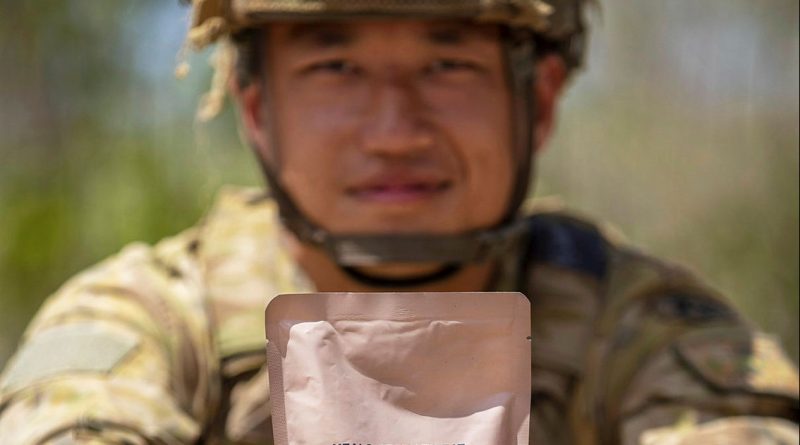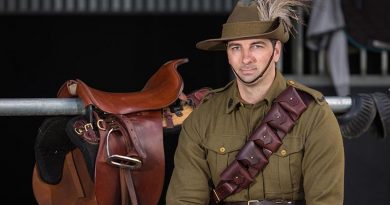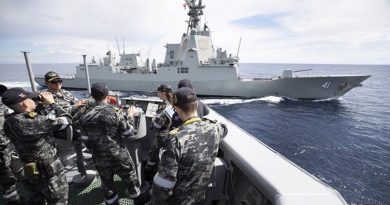Army combat rations pass the taste test

It is a comfort for soldiers to know that team members who develop combat rations for Australia’s Army sample everything before sending the food out in the field.
CAPTION: Private Johnny Huang, from 7RAR, holds a combat ration pack main meal at Mount Bundey training area. Story and photo by Corporal Jacob Joseph.
Food technologist Lucy Atkin thinks the main meals are just as good cold as they are hot.
“We try the food a lot – hot and cold,” the Capability Acquisition and Sustainment Group (CASG) food technologist said.
“We have to do it that way so it represents how it’s eaten in the field.”
Combat rations are judged from one to nine. Items that score six or more make it to the next round.
Civilian food technologists are part of a team that includes uniformed technical advisers, such as Warrant Officer Class 2 Andre Borg, who apply a real-world lens to a product’s suitability for soldiers.
Combat ration packs have come a long way since the days of bully beef and biscuits passed around the trenches.
Today, soldiers’ food is designed and tested by scientists in laboratories.
In total, there are five types of combat ration, including patrol, emergency and flying.
But it’s the ubiquitous 24-hour combat ration one man (CR1M) that should be most familiar.
At about $50 each, there are eight menus in circulation, with two containing meat-free main meal options.
Sweet potato and Thai red curry, and potato and chickpea curry have widened the appeal of the CRPs, but there have been no sweeping changes, Warrant Officer Class 2 Borg said.
Rather, the team he works with makes improvements, such as tweaking flavours or refining recipes to improve nutritional value or taste, with menu changes occurring each year.
A concept will be proposed, such as citrus cake or new steak bar flavour, and food technologists will work with the technical cell to assess its suitability.
“We discuss whether it’s going to work in the field; if the user group will like it; if it’s nutritionally suitable; and could it last for up to two years,” Mrs Atkin said.
The concept is sent to the manufacturer, which makes a limited run of the product, before the foods are put through a taste test and assessed against Army specifications.
Up to 300 samples are then tested by a user group, which could be soldiers in the barracks or the field.
But with so many different people eating rations, Warrant Officer Class 2 Borg said it could be difficult producing items with mass appeal.
“The demographic of the ADF is young, when it comes to taste and acceptability. It’s different for younger and older people,” he said.
He said once a product made it into the ration pack and wider Army, the feedback stopped.
“From a CASG perspective, no feedback means the soldiers are happy,” Warrant Officer Class 2 Borg said.
.
.

.
.





